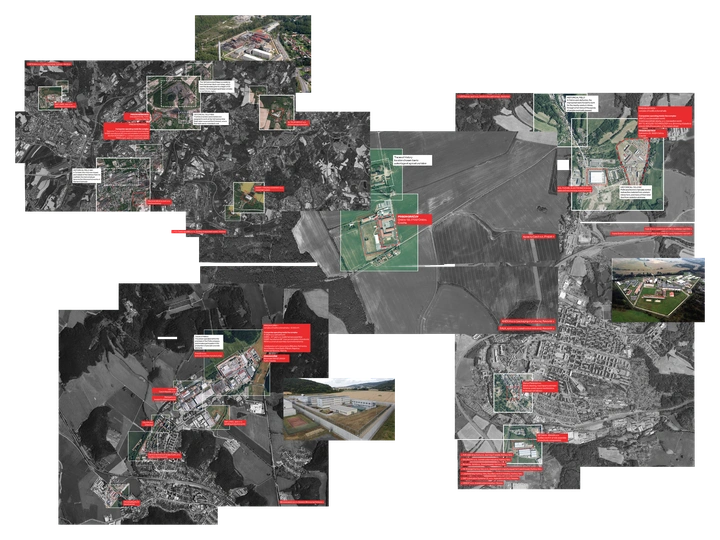NOTES ON PRISON: Towards Carceral Abolition

Adéla Vavříková is an architect who gained her master’s degree at the Academy of Arts, Architecture and Design in Prague (AAAD) with a thesis examining carceral structures and their intersections with architecture. She currently works as an independent artistic researcher and exhibition architect. Together with Magdalena Uhlířová, she co-founded RUINA office – a studio focused primarily on exhibition architecture. Their work is grounded in principles of deconstruction, upcycling, and a sensitive approach to local environments. RUINA engages in the reconstruction of architectural elements, individual rooms, entire apartments, exhibition structures, and small-scale objects. Their practice reflects current tendencies that emphasize the social and ecological adaptability of architecture while also addressing ongoing crises and systemic shortcomings.
Adéla collaborates long-term on exhibition projects with artist Eva Koťátková (e.g. My Body Is Not an Island at the National Gallery in Prague, The Heart of a Giraffe in Captivity Is 12 Kilos Lighter at the Venice Biennale and the Echoes in the National Gallery in Prague), and with the contemporary art initiative tranzit.cz. She contributes to SHIFT, a research platform and sustainability lab at AAAD. In the past, she worked as a gender equality expert in politics at the NGO Fórum 50 % and as a researcher at the Sustainable Urbanism Lab of the NGO Auto*Mat, where she focused on fair mobility and public transport.
NOTES ON PRISON (notesonprison.cargo.site) is a critical spatial research project that explores the material, spatial, and strategic aspects of prison architecture. It focuses on how carceral power reaches beyond the perimeter of prison walls through architectural logics. Originally developed as my master's thesis, the project emerged from a personal shift–from intersectional feminist activism to a deeper grasp of how carceral capitalism intersects with gender, race, class, and spatial injustice (Angela Y. Davis’s work was a key turning point). Architecture, as my field of expertise, became a lens to reveal and challenge the spatial tools of incarceration.
The research combines abolitionist theory, posthumanism, and forensic methods to expose architecture’s role in systems of oppression. The online archive documents this inquiry, mapping practices and design strategies that reinforce carceral power across contexts. The work gained traction during an exhibition, sparking open dialogue among architects, theorists, and the public. The project urges architects to face their active role in enabling carceral infrastructures and take responsibility for the ethical stakes of their work. There is an urgent need for a vocal, collective stance in the field: a recognition that designing spaces of confinement is complicity–and must be questioned, resisted, and refused.
Looking ahead, I plan to keep developing the project in both digital and print formats–finding ways it can circulate in studios, schools, and chambers. The aim is to start conversations about architecture’s role in carceral systems. Through the LINA Fellowship, I hope to test strategies (print materials, workshops, public dialogue) for making the project more visible–opening space for critical exchange and building momentum for shared accountability and refusal.